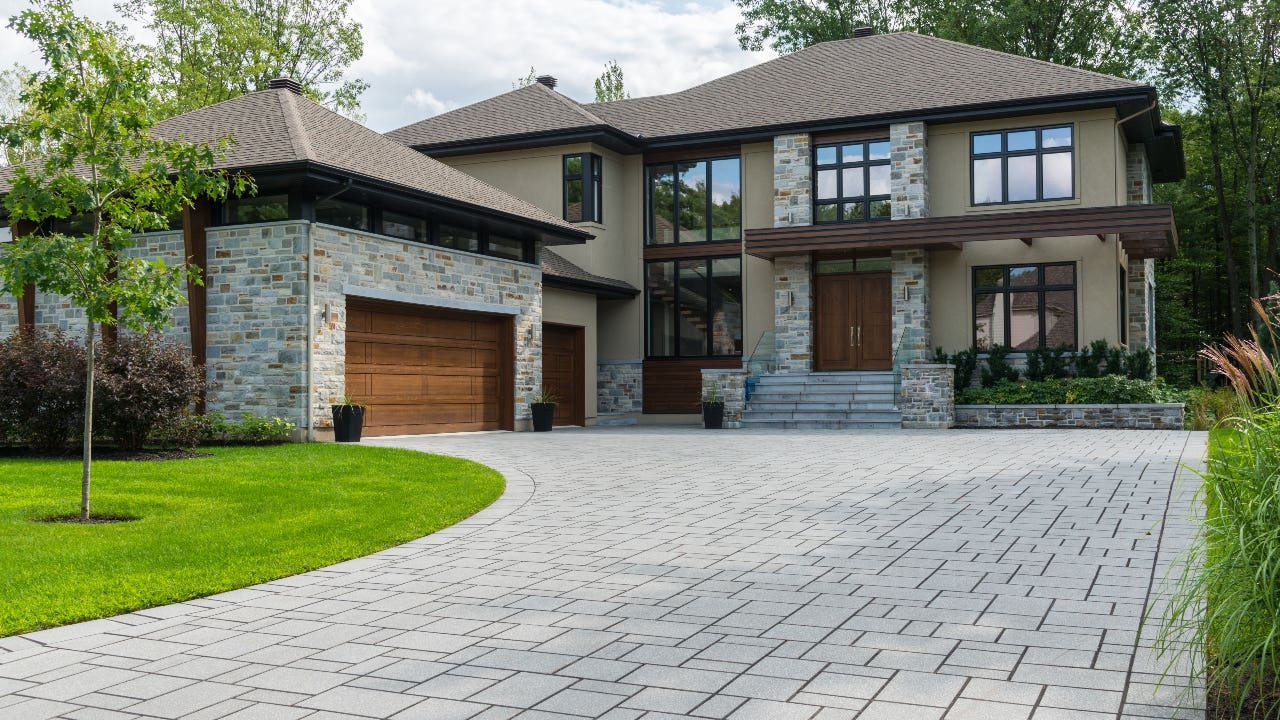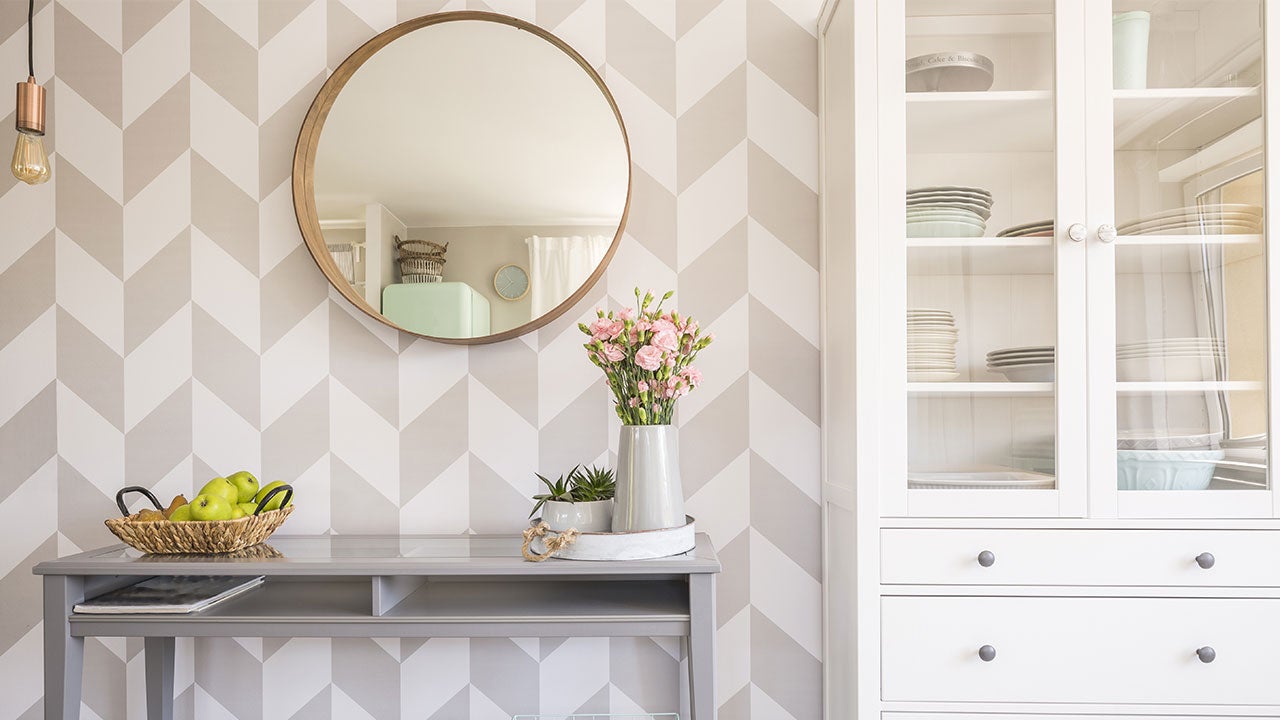7 best home improvements of 2022

If you’re considering renovating your home this year, you’re not alone. Harvard University’s Joint Center for Housing Studies estimates homeowner spending on improvements and repairs could climb to $430 billion by the second half of 2022.
With the supply chain crisis and labor shortages continuing to drive up material costs, it’s smart to know which projects stand a better chance of giving you a return on your investment (ROI). With that in mind, here’s a look at some of the best home improvements of 2022 based on ROI, according to Remodeling magazine’s Cost vs. Value Report.
1. Replacing your garage door
The best home improvement to make isn’t inside your home; instead, it’s the home for your car. The average garage door replacement costs just over $3,900 and maintains a resale value of more than $3,660.
2. Adding stone veneer to the exterior
You might spend an average of more than $10,300 replacing your existing siding with a stone veneer on the bottom third of your home. However, that aesthetic touch can still make a meaningful difference when it’s time to sell: This improvement typically manages to recoup more than 92 percent of its cost at resale.
3. Remodeling your kitchen
After the bedroom, the kitchen is likely the room you spend the most time in when you’re home. So if you’re thinking of enhancing the space, you could be cooking up a recipe with good ROI. A minor kitchen remodel — which carries an average price tag of more than $26,000 — typically recoups more than 72 percent of its cost.
Keep the “minor” definition in mind when planning your project: Remodeling’s data shows that a “major” kitchen remodel — which includes new cabinets and range and custom lighting — only recoups around 57 percent of its cost. So, this is one area where it can pay a lot more to spend a lot less.
4. Replacing your exterior siding
While new siding might not sound like the most exciting home improvement, the reality is that upgrading your home’s layer of protection is a smart move. If you opt to spend more on fiber-cement siding (average price of $19,626), you could see a slightly higher ROI than going with vinyl siding (average price of $16,576). Either way, new siding generally recoups between 68 percent and 69 percent of the cost.
5. Installing new windows
New windows can make a difference on your utility bills now and have an impact when you’re ready to sell, too. If you go with vinyl windows, you can expect to spend an average of $19,385 and enjoy a resale value of $13,297. You can opt for wood windows, but you’ll likely pay more and have a slightly lower ROI.
6. Adding a deck
It seemed like everyone who didn’t have a deck wanted to add one in the pandemic. Decks aren’t just a shelter-in-place trend, though: You can expect to recoup more than 65 percent of your spending if you install a wood deck, with an average investment of $16,766.
7. Adding a new steel door
Improving your home doesn’t have to mean spending a lot. A new steel front door typically runs just over $2,000, and it maintains a good chunk of that value. From that new welcome piece, you can expect to recoup 65 percent — about $1,350.
How to finance a home renovation
Once you decide what’s worth the investment, it’s time to find a way to pay for it. If it’s a small improvement, you might be able to cover the cost with money from your bank account. If it’s a bigger project, consider these approaches:
- Cash-out refinance – Interest rates are still relatively low, so a cash-out refinance can be a wise option, especially if you’re planning a major overhaul. With a cash-out refi, you’ll replace your existing mortgage with a new one that includes funding for your project. The downsides: You’ll owe more money, and you’ll need to pay closing costs, which can add up to thousands of dollars. The upside is that you’ll be able to borrow the money for cheap if you have excellent credit.
- Home equity loan or home equity line of credit (HELOC) – If you don’t want to deal with closing costs, a HELOC or home equity loan could be a better bet. With a home equity loan, you’ll get a sum of money, while a HELOC allows you to access more money as you need it. The interest rate you’ll pay and the amount of time you’ll have to pay the money back varies with these two forms of financing.
- Zero-percent APR credit card offer – Opening a new credit card with a zero-percent APR introductory offer for projects with a smaller price tag can help you avoid paying any finance charges. With some of these offers, you can score a nice sign-up bonus for hitting a certain spending threshold, too. The catch? You must have a strategy for paying off that debt before the introductory period is over. That credit card can quickly turn into a debt trap if you don’t. Suppose you’re making minimum payments on a credit card that charges 17 percent interest. In that case, it doesn’t matter what you expected to recoup from your home improvement: You’re already erasing a lot of potential ROI.
- Home equity sharing agreement – If you don’t want to make monthly payments or accrue interest, there are some alternatives to financing your home renovation. Companies like Unison, Hometap, and Unlock all offer a different kind of deal: money now in exchange for a portion of your home’s sales price in the future. It can be a good deal for the short term since you won’t pay to borrow the money, but it might not feel so great when you have to hand over a portion of the sale price later.
No matter how you choose to pay, keep in mind: Determining the best home improvements isn’t just about the value they’ll potentially recoup. Perhaps you’re planning to stay in your home for the foreseeable future, and your employer has given you the ability to work from home indefinitely. If that’s the case, maybe a home office renovation will add a lot of intangible value with the ability to separate your work life from your home life. As you think about what will make your house feel more like a home, consider how long you’re planning to stay there and how your family might change between now and then.
You may also like

Which states have the richest homeowners?

10 home renovations you can DIY on a budget




